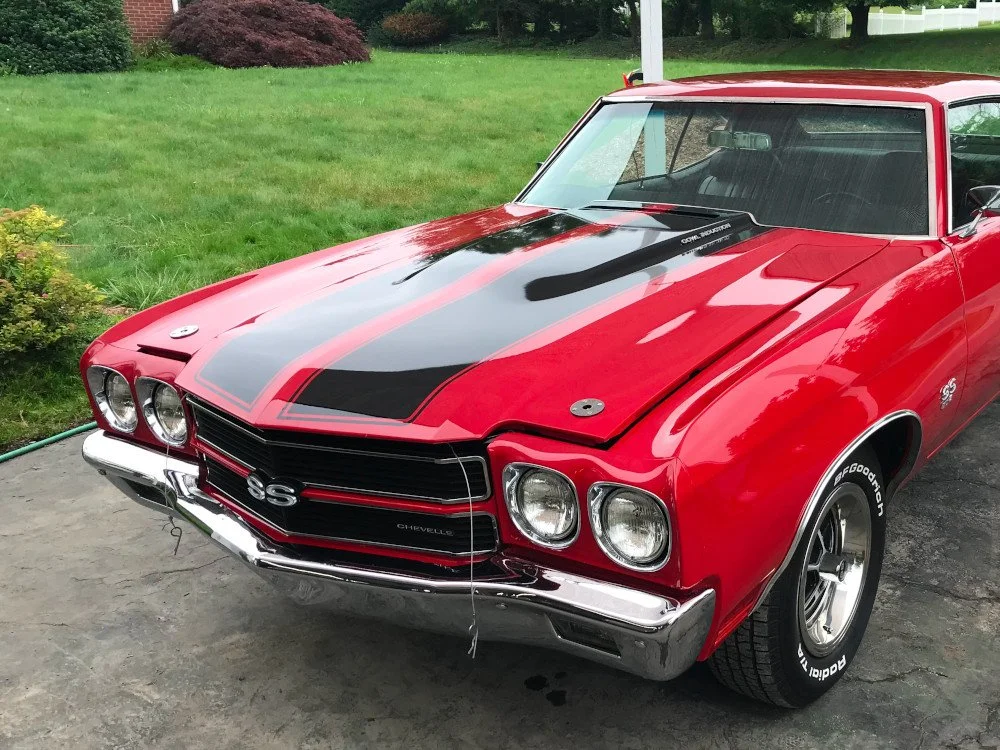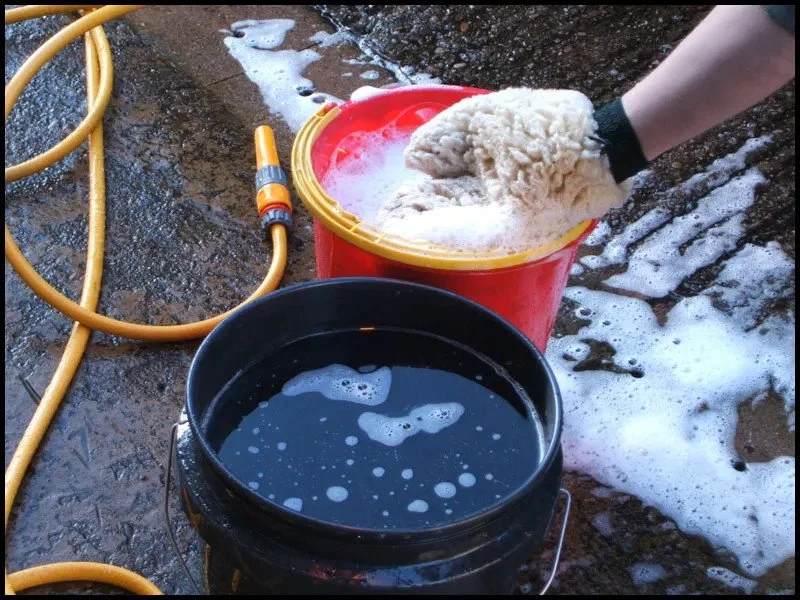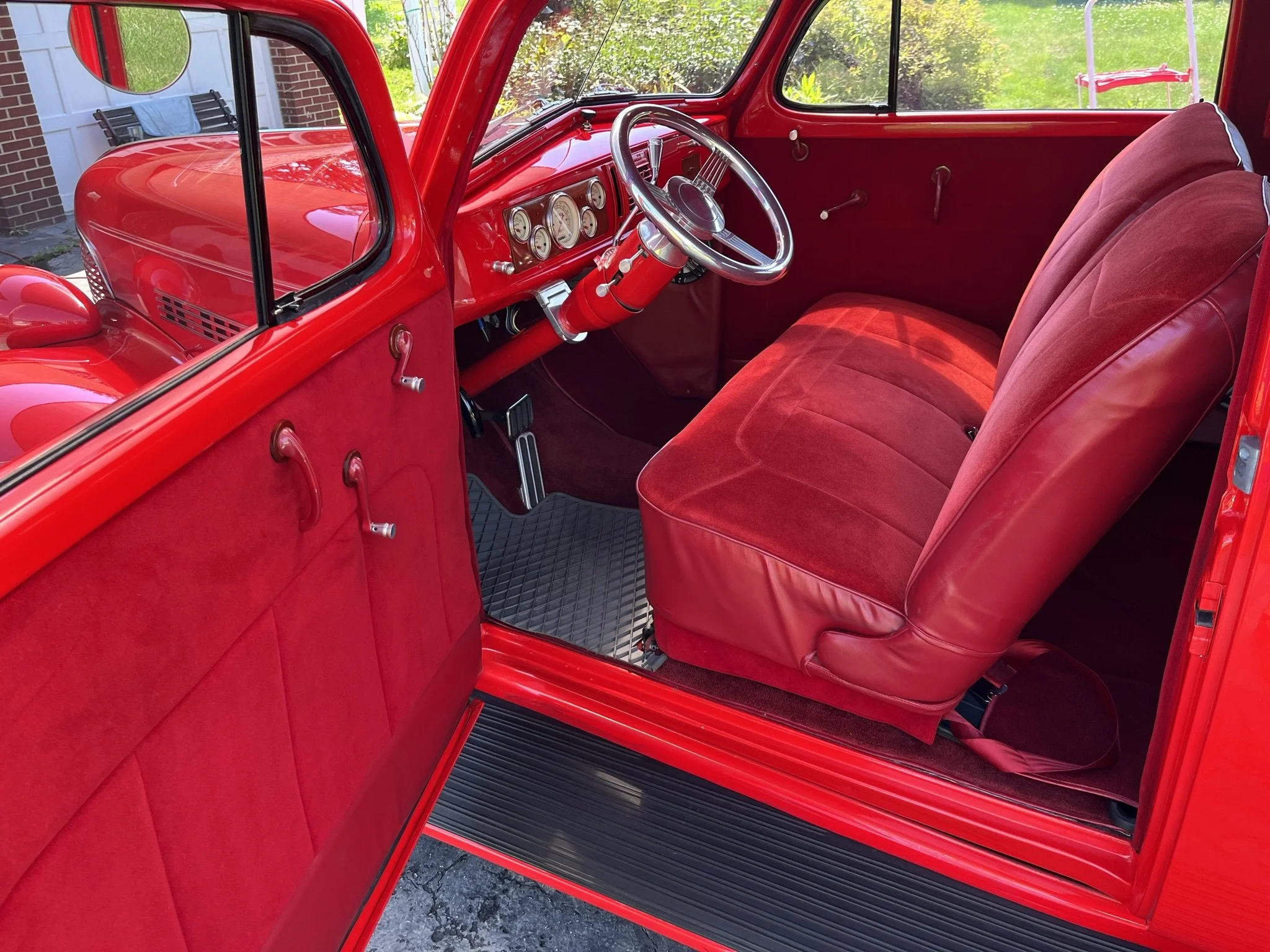Classic Car Detailing
Protect Your Investment with These Expert Techniques
The Timeless Allure of Classic Cars
Did you know that the classic car market has grown by over 300% in the past decade, outperforming many traditional investments? This surprising statistic from Hagerty, a leading classic car insurer, underscores the enduring appeal and value of vintage automobiles.
Classic cars are more than just modes of transportation; they're tangible pieces of history. Each curve, chrome accent, and leather-wrapped steering wheel tells a story of innovation and style that continues to resonate today.
However, preserving these automotive treasures presents unique challenges, especially when it comes to detailing. Unlike modern vehicles, classic cars often feature delicate finishes and vintage components that require a completely different approach to care and maintenance.
Let's dive into the world of classic car detailing. Whether you're a seasoned collector or a newcomer to the classic car scene, you'll find valuable tips to keep your pride and joy in showroom condition.
Understanding Classic Car Finishes
Before you break out the buffing pads and wax, it's crucial to understand the unique characteristics of vintage finishes. Applying modern detailing techniques to a classic car can do more harm than good.
Single-Stage vs. Clear Coat Paints: What's the Difference?
Single-stage paints, common in cars produced before the 1980s, combine color and gloss in one layer. This makes them more susceptible to oxidation and fading compared to modern two-stage systems. Clear coat paints, introduced in the 1980s, offer better protection but early versions can be prone to delamination.
At Hanson's Auto Detail, we tailor our approach to preserve the original look while addressing common issues like oxidation and fading.
Identifying and Addressing Common Finish Issues
Classic car paint often suffers from a variety of issues:
1. Oxidation: Appears as a chalky or dull surface
2. Fading: Loss of color intensity due to UV exposure
3. Checking: Fine cracks in the paint surface
4. Orange peel texture: A bumpy finish resembling the skin of an orange
5. Paint chip damage: Small areas where paint has flaked off
Professional paint correction services, like those offered by Hanson's Auto Detail, can address these issues without compromising the integrity of the original finish. For DIY enthusiasts, Detailing World offers valuable forums and guides on assessing and addressing paint issues.
Pre-Detailing Inspection: The Foundation of Proper Care
Before picking up a polishing cloth, a thorough inspection is essential. This step helps identify potential issues and guides the entire detailing process.
Here's a quick checklist to get you started:
- Check for rust spots, especially in wheel wells and under chrome trim
- Assess the condition of rubber seals and gaskets
- Inspect chrome components for pitting or discoloration
- Evaluate the interior for wear, paying special attention to leather and wood surfaces
At Hanson's, we conduct meticulous inspections to ensure every classic car receives tailored care. Our experts use specialized tools to assess paint thickness, detect hidden damage, and develop a customized detailing plan for each vehicle.
Documenting the Car's Condition: More Than Just Before and After Photos
Proper documentation is essential, not just for tracking improvements but also for maintaining the car's value. Here's what it entails:
1. Detailed photographs: Capture high-resolution images of the entire vehicle, including close-ups of problem areas.
2. Written assessment: Create a comprehensive report detailing the condition of each component.
3. Paint thickness measurements: Use a paint thickness gauge to map out areas of original vs. repainted surfaces.
4. Historical records: Compile any available service history, restoration records, or previous condition reports.
For DIY enthusiasts, YouTube tutorials on classic car documentation can provide helpful tips on capturing your vehicle's condition effectively.
Safe Cleaning Techniques for Delicate Surfaces
When cleaning classic cars, gentleness is key. Harsh chemicals and abrasive tools can damage delicate finishes, potentially diminishing the vehicle's value.
Start with a pH-neutral car shampoo to safely remove dirt and grime without stripping wax or damaging paint. Hanson's Auto Detail offers a range of specialized, safe cleaning products suitable for classic cars.
Here's a step-by-step guide to safely washing your classic car:
1. Pre-rinse: Use a gentle spray to remove loose dirt and debris.
2. Two-bucket method: Use one bucket for soapy water and another for rinsing your wash mitt to prevent scratches.
3. Top-down approach: Start from the roof and work your way down to avoid recontaminating cleaned areas.
4. Gentle agitation: Use a soft microfiber wash mitt and light pressure to avoid scratching.
5. Frequent rinsing: Rinse your mitt often to prevent dirt from being dragged across the paint.
6. Final rinse: Use a gentle spray or sheeting method to remove all soap residue.
For vintage interiors, use soft-bristled brushes and specialized cleaners to avoid damaging delicate materials. Leather should be cleaned and conditioned with products designed for older hides, like Leatherique, to prevent cracking and maintain suppleness.
Choosing the Right Cleaning Products: A Crucial Decision
Selecting appropriate cleaning products is vital for preserving classic car finishes. Modern detailing products may be too aggressive for vintage surfaces. Here's what to look for:
- pH-neutral formulas: These are gentle on all surfaces and won't strip protective waxes.
- Non-abrasive cleaners: Avoid products with harsh scrubbing agents that can scratch delicate finishes.
- Period-correct products: Some brands offer formulations specifically designed for classic cars.
Detailed Image offers a wide selection of detailing products suitable for vintage vehicles, along with helpful guides on product selection.
Paint Correction: Restoring Vintage Luster
Reviving the shine of classic car paint requires a delicate touch and specialized techniques. At Hanson's Auto Detail, we use a multi-step process to safely correct imperfections while preserving the integrity of the original finish.
Our process includes:
Assessment using paint thickness gauges and specialized lighting
Gentle cleaning with a thorough wash and clay bar treatment
Careful correction starting with the least aggressive method
Continuous monitoring to ensure we're not removing too much material
Final polishing to restore maximum gloss and depth to the paint
For DIY enthusiasts, the r/ClassicCars subreddit is an excellent resource for tips and advice on paint correction techniques.
Hand vs. Machine Polishing for Classics
While machine polishing can be more efficient, hand polishing offers greater control and is often safer for delicate finishes. Here's a comparison:
Hand Polishing:
Apply a small amount of polish to a foam applicator pad
Work in small, overlapping circles with light pressure
Gradually increase pressure if needed, but be cautious of heat build-up
Buff off residue with a clean microfiber cloth
Machine Polishing:
Use a dual-action polisher for safer operation
Start with the least aggressive pad and polish combination
Work in small sections, moving the machine slowly and steadily
Monitor heat build-up and paint removal carefully
Always use a paint thickness gauge to ensure you're not removing too much material during the correction process.
Protecting Classic Car Finishes: The Final Touch
After correction, protecting the finish is crucial for maintaining that showroom shine. Let's compare the options:
|
Protection Type |
Pros | Cons | Durability |
|---|---|---|---|
|
Traditional Carnauba Wax |
Warm, deep glow |
Limited durability |
2-3 months |
|
Modern Synthetic Sealants |
Longer-lasting protection |
May not provide the same traditional look |
4-8 months |
|
Ceramic Coatings |
Extremely durable, high gloss, protection |
More expensive, complex application |
1-10 years |
Hanson's Auto Detail offers professional ceramic coating services that provide exceptional protection for classic car finishes, combining durability with a stunning shine.
Waxing Techniques for Vintage Cars: A Step-by-Step Guide
When applying wax to a classic car:
Ensure the surface is clean and free of contaminants
Use a soft applicator pad and work in small, overlapping circles
Allow the wax to haze according to the product instructions
Buff with a clean microfiber cloth, turning frequently
Pay extra attention to areas prone to water spots, like the hood and trunk
For best results, wax your classic car every 2-3 months, or more frequently if it's regularly exposed to the elements.
Special Considerations for Classic Car Components
Classic cars often feature unique components that require specialized care:
Chrome bumpers and trim: Polish with a dedicated product like Simichrome to restore shine without scratching.
Vinyl and convertible tops: Clean with a specialized cleaner like Angelwax Excelsior and protect with a UV-resistant product.
Wire wheels: Use a soft brush and a cleaner designed for wire wheels to prevent damage.
Wood and Bakelite interiors: Clean wood surfaces with a damp microfiber cloth and use a specialized wood polish for nourishment. For Bakelite, use a mild soap solution.
Professional vs. DIY Classic Car Detailing: Making the Right Choice
While regular maintenance can be done at home, professional detailing services offer expertise, specialized tools, and access to high-grade products that can make a significant difference in your classic car's appearance and protection.
Consider professional detailing for:
Major paint correction or restoration projects
Applying ceramic coatings or other advanced protection systems
When you're unsure about the condition of your car's finish or the appropriate treatments
Before major shows or events where you want your car to look its absolute best
Hanson's Auto Detail brings over two decades of experience in handling classic and vintage vehicles, ensuring your prized possession receives the care it deserves.
Preserving Automotive History, One Detail at a Time
Proper detailing is essential for maintaining the beauty, value, and historical significance of classic cars. By understanding the unique needs of vintage vehicles and employing appropriate techniques, you can ensure your classic car remains a cherished piece of automotive history.
Remember, patience and attention to detail are key when working with classic cars. Each vehicle tells a story, and with proper care, that story can continue to captivate car lovers for generations to come.
Ready to give your classic car the expert care it deserves? Schedule a detail with Hanson's Auto Detail today and experience the transformation we can bring to your prized possession.
FAQs: Classic Car Detailing
1. How often should I detail my classic car?
Regular detailing every 3-4 months is recommended, with more frequent cleaning if the car is driven regularly or stored outdoors.
2. Can I use modern car wash soaps on my classic car?
It's best to use pH-neutral soaps specifically formulated for classic cars to avoid damaging delicate finishes.
3. Is it safe to use a pressure washer on a classic car?
Generally, it's not recommended. Hand washing is safer and prevents water from penetrating areas with aging seals.
4. How can I protect my classic car's chrome?
Regular cleaning and application of a chrome-specific sealant can help protect against pitting and oxidation.
5. Should I wax or ceramic coat my classic car?
Both options have merits. Wax offers a traditional look but requires more frequent application. Ceramic coatings provide longer-lasting protection but may alter the original appearance slightly.
6. How do I clean wire wheels without damaging them?
Use a soft brush and a specialized wire wheel cleaner. Avoid harsh chemicals that can strip protective coatings.
7. What's the best way to maintain a classic car's leather interior?
Clean with a leather-specific product and condition regularly to prevent cracking and maintain suppleness. Avoid silicone-based products that can damage vintage leather.






